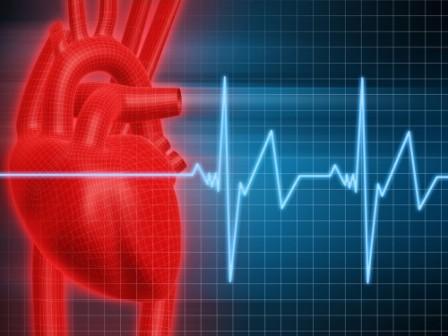People who have a high heart rate (pulse) at rest have an increased risk of death even if they are physically fit and healthy, according to a new study in the journal Heart.
A resting heart rate is the number of beats per minute when somebody has been sitting or lying down for ten minutes. Those with a resting heart rate of between 60 and 100 beats per minute are considered to have normal heart rates.
A resting heart rate is determined by a person’s: circulating hormones level of physical fitness the autonomic nervous system Scientists have known that very physically active people usually have a low heart rate at rest, however, the researchers in this study wanted to determine whether heart rate had any impact on a person’s risk of death, regardless of their level of cardiorespiratory fitness.
The health of about 3,000 men who were part of the Copenhagen Male Study was monitored for 16 years. It began in 1970-71 to track middle-aged men’s cardiovascular health at 14 large companies in Copenhagen. In 1971, all subjects were asked questions by a physician regarding their health and lifestyle, including whether they smoked and exercised. They were also given a physical examination.
The participants also performed a cycling test, set at three different levels of exertion, in order for the experts to evaluate their cardiorespiratory fitness. In 1985-6, another check-up was given to just under 3,000 of the original volunteers in which blood pressure, height, weight, blood glucose, and blood fats were measured.
The scientists also recorded their resting heart rate (ECG and VO2Max). In order to find out which of these men had survived sixteen years later, in 2001, the team checked national Danish registers.
They discovered that nearly 4 out of 10 (39%; 1082) of the males had died. The investigators explained: “Unsurprisingly, a high resting heart rate was associated with lower levels of physical fitness, higher blood pressure and weight, and higher levels of circulating blood fats. Similarly, men who were physically active tended to have lower resting heart rates.” However, the higher the resting heart rate, the higher the risk of death was, regardless of the subjects’ level of fitness. The team adjusted for factors likely to impact the results and found that: a resting heart rate of between 51 and 80 beats per minute was linked to a 40 to 50% elevated risk of death a resting heart rate of between 81 and 90 beats per minute doubled the risk, compared with those with the lowest rate resting heart rates over 90 beats per minute tripled the risk Every 10 to 22 additional beats per minute in resting heart rate raised the likelihood of death by 16%, overall, according to the authors.
“When smoking was factored in, this showed that every 12 to 27 additional heartbeats per minute increased a smoker’s risk by 20%, with a 14% increase in risk for every additional 4 to 24 beats per minute for non-smokers,” they explained. Although research has centered on resting heart rate
a measure of longevity, scientists have not known whether a high heart rate is just a sign of low levels of physical fitness.
The researchers concluded: “We found that irrespective of level of physical fitness, subjects with high resting heart rates fare worse than subjects with lower heart rates. This suggests that a high resting heart rate is not a mere marker of poor physical fitness, but is an independent risk factor.”
A previous study in JAMA found that people whose resting heart rates increase over a ten-year-period have an increased risk of dying early from any cause and a greater likelihood of developing ischemic heart disease.





No comments! Be the first commenter?